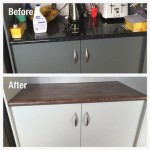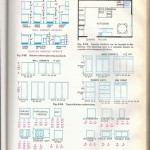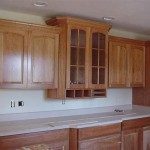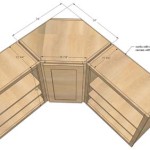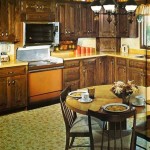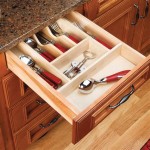Standard Height for Kitchen Cabinet Knobs: A Definitive Guide
Kitchen cabinet hardware, including knobs and pulls, might seem like minor details, but their placement significantly influences both the functionality and the aesthetics of a kitchen. The proper positioning of cabinet knobs affects accessibility, comfort, and the overall visual harmony of the space. This article will delve into the standardized heights for kitchen cabinet knobs, exploring the factors that contribute to these standards and providing a comprehensive understanding of how to achieve optimal placement in various kitchen scenarios.
While there isn't a single, universally mandated height for kitchen cabinet knobs, certain dimensions are widely accepted and recommended within the industry. These recommendations are based on ergonomic principles, common cabinet dimensions, and generally pleasing visual proportions. By understanding these accepted standards, homeowners and designers can create kitchens that are both functional and aesthetically appealing.
Understanding the principles behind these standards is crucial. Blindly following guidelines without considering individual factors such as physical abilities, cabinet styles, and personal preferences can lead to less-than-ideal results. Therefore, a thorough exploration of the contributing factors is necessary before making any final decisions about knob placement.
Key Point 1: Standard Height for Upper Cabinet Knobs
Upper cabinets, also known as wall cabinets, typically house items that are frequently accessed, such as dishes, glassware, and pantry staples. The placement of knobs on these cabinets is critical for ease of use, particularly for individuals of varying heights. The generally accepted standard height for upper cabinet knobs is between 2 and 3 inches from the bottom corner of the cabinet door. This placement is not arbitrary; it's based on a combination of factors that contribute to accessibility and visual balance.
Placing the knob too high on the cabinet door can create an awkward reach, especially for shorter individuals. Conversely, placing the knob too low can make it difficult to grip and may also visually unbalance the door. The 2- to 3-inch range represents a compromise that accommodates a wide range of users while maintaining a visually pleasing proportion on the cabinet door.
It's crucial to consider the style of the cabinet door when determining the precise placement within this range. For example, a cabinet door with a raised panel might benefit from a slightly higher placement to avoid interfering with the panel's decorative details. Similarly, a shaker-style cabinet door might look best with the knob centered on the frame's vertical stile, which could fall within or slightly outside the typical 2- to 3-inch range. The goal is to integrate the knob placement seamlessly with the door's design.
Another factor to consider is the overall height of the upper cabinets. Taller upper cabinets might warrant a slightly higher knob placement to maintain visual balance and ease of access for items stored on higher shelves. Conversely, shorter upper cabinets might benefit from a slightly lower placement to avoid making the knob appear too close to the top edge of the door. The height of the upper cabinets in relation to the countertop is also a factor. If the cabinets are unusually high above the countertop, a slightly higher position might be preferable.
Furthermore, the weight of the cabinet door should be considered. Heavier doors might require a more robust knob or pull, and its placement should be strategically chosen to provide adequate leverage. Reinforcement behind the cabinet door may be necessary to ensure the knob's stability and longevity. This is especially important if the cabinet doors are frequently opened and closed.
Ultimately, the ideal height for upper cabinet knobs is a balance between ergonomic considerations, visual aesthetics, and the specific characteristics of the cabinet doors themselves. Careful consideration of these factors will result in a kitchen that is both functional and visually harmonious.
Key Point 2: Standard Height for Lower Cabinet Knobs
Lower cabinets, also known as base cabinets, typically house items that are less frequently accessed or heavier in weight, such as pots, pans, and small appliances. The placement of knobs on these cabinets is equally important for functionality and aesthetics, though the considerations differ somewhat from those for upper cabinets. The generally accepted standard height for lower cabinet knobs is between 2 and 3 inches from the top corner of the cabinet door. This placement mirrors the principle for upper cabinets but with the inverse orientation.
Placing the knob too low on the cabinet door can create an awkward bending and straining motion, especially for individuals with back problems. Conversely, placing the knob too high can make it difficult to reach, particularly for items stored on lower shelves. The 2- to 3-inch range provides a comfortable reach for most users while maintaining a visually balanced appearance.
Similar to upper cabinets, the style of the cabinet door plays a significant role in determining the precise placement of the knob. On a shaker-style door, the knob is often centered on the vertical stile. On a raised-panel door, the knob might be placed slightly lower to avoid interfering with the panel's details. The overall goal is to seamlessly integrate the hardware with the door's design, creating a cohesive and visually appealing look.
The type of lower cabinet also influences knob placement. For drawer fronts, the placement is typically centered, both horizontally and vertically. This provides a balanced and symmetrical appearance. For cabinets with pull-out shelves or drawers, the knob placement should consider the additional weight and force required to operate these mechanisms. Reinforcement behind the drawer or door front may be necessary to ensure the knob's stability and longevity.
Consideration should also be given to the proximity of the cabinet to the floor. If the cabinet is very close to the floor, a slightly higher knob placement may be preferable to avoid unnecessary bending. Conversely, if the cabinet is raised on legs, a slightly lower placement may be more comfortable. The goal is to optimize the placement for ease of access and ergonomic comfort.
Ultimately, the best height for lower cabinet knobs is a result of carefully balancing ergonomic considerations, visual aesthetics, and the specific characteristics of the cabinet doors and drawer fronts. By considering these factors, homeowners and designers can create kitchens that are both functional and visually appealing.
Key Point 3: Considerations Beyond Standard Heights
While the standardized height ranges for cabinet knobs provide a solid starting point, several factors can necessitate deviations from these norms. These factors include user preferences, accessibility needs, and unique design considerations. Ignoring these factors can lead to a kitchen that is less functional and less aesthetically pleasing than it could be.
One primary consideration is the physical abilities of the individuals who will be using the kitchen. If a household member has limited mobility, arthritis, or other physical limitations, adjusting the knob placement to accommodate their needs is essential. This might involve placing knobs slightly higher or lower than the standard range, or even opting for pulls instead of knobs, as pulls offer a larger gripping surface and require less fine motor control.
Accessibility is a crucial consideration for kitchens designed for individuals with disabilities. The Americans with Disabilities Act (ADA) provides guidelines for accessible design, including recommendations for cabinet hardware placement. While the ADA guidelines are primarily intended for commercial spaces, they can also be valuable for residential kitchens designed to be accessible.
Another factor to consider is the overall design style of the kitchen. A modern, minimalist kitchen might benefit from a more streamlined hardware placement, while a traditional kitchen might call for a more ornate and decorative approach. The knob style itself can influence the perceived height and visual impact. A larger knob might appear more prominent and require a slightly different placement than a smaller, more understated knob.
Furthermore, the presence of other design elements in the kitchen can affect the optimal knob placement. For example, if the kitchen features a backsplash with intricate patterns or textures, the knob placement should be carefully considered to avoid clashing with these elements. Similarly, the color and finish of the cabinets and hardware should be coordinated to create a cohesive and visually appealing look.
In some cases, custom cabinet configurations might necessitate deviations from the standard height ranges. For example, a cabinet with an unusual height or depth might require a different knob placement to ensure ease of access and functionality. Similarly, a cabinet with a unique door style or construction might call for a customized hardware solution.
Finally, personal preference plays a significant role in determining the ideal knob placement. While standardized guidelines can provide a starting point, ultimately, the best height for cabinet knobs is the one that feels most comfortable and visually appealing to the individuals who will be using the kitchen. Experimentation and mock-ups can be valuable tools for determining the optimal placement.
In summary, while standard heights for kitchen cabinet knobs provide a valuable framework, it is essential to consider individual needs, accessibility requirements, design aesthetics, and custom cabinet configurations to achieve optimal functionality and visual harmony. A thoughtful and personalized approach to knob placement will result in a kitchen that is both beautiful and practical.

Comprehensive Guide To Cabinet Hardware Size Placement Handles More

The Right Length Cabinet Pulls For Doors And Drawers Kitchen Hardware

How To Place Cabinet Knobs Pulls

Cabinet Hardware Installation Guide At Cabinetknob Com

Cabinet Hardware Placement Guide

How To Choose Hardware Pull Size For Your Cabinets

Cabinet Hardware Installation Guide At Cabinetknob Com

How To Place Cabinet Knobs Pulls

Cabinet Hardware Placement Guide

How To Place Cabinet Knobs Pulls
Related Posts

